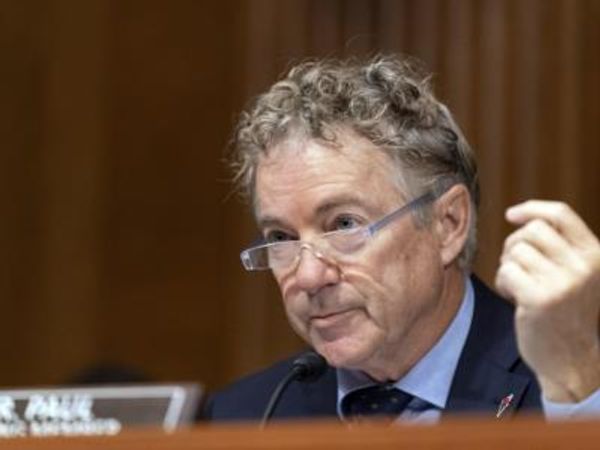
Baseball Commissioner Rob Manfred canceled 93 more games Wednesday, increasing pressure on locked out players and appearing to close the remaining chance to play a full 162-game schedule.
MLB announced two additional series had been canceled through April 13. That raised the total to 184 games wiped out from the 2,430-game season, or 7.6%.
“In a last-ditch effort to preserve a 162-game season, this week we have made good-faith proposals that address the specific concerns voiced by the MLBPA and would have allowed the players to return to the field immediately," Manfred said in a statement. “Because of the logistical realities of the calendar, another two series are being removed from the schedule, meaning that opening day is postponed until April 14."
The two sides' differences narrowed with the union's latest counteroffer. Earlier in the day, management gave the union a new option that would allow an agreement to be cut short after the 2024 season — leading to even more bargaining between management and players that regard each other with disdain.
While the gaps narrowed on the three most contentious economic items under discussion, management pressed for its long-held goal of an international amateur draft. Players have repeatedly rejected the proposal since it was made on July 28.
MLB said it would not make a new counteroffer to players unless the union first chose one of three options: agreeing to the international draft in exchange for the elimination of direct amateur draft pick compensation for qualified free agents; keeping compensation in exchange for MLB dropping the international draft proposal; or dropping compensation while giving players until Nov. 15 to accept an international draft starting in 2024 and giving MLB the right to reopen the labor contract after the 2024 season if players fail to accept the draft.
On the 98th day of baseball's first work stoppage since 1995, the last alternative would leave open the possibility of another labor conflict in less than three years.
MLB had told the union that Tuesday was the last possible day to reach an agreement that would allow a modified 162-game schedule, along with full salary and service time needed to reach free agency for players.
“The clubs went to extraordinary lengths to meet the substantial demands of the MLBPA,” Manfred said. “On the key economic issues that have posed stumbling blocks, the clubs proposed ways to bridge gaps to preserve a full schedule. Regrettably, after our second late-night bargaining session in a week, we remain without a deal.”
Players dropped their threshold for the luxury tax to $232 million this year, with increases to $235 million in 2023, $240 million in 2024 and $245 million in 2025 and $250 million in 2026.
Players had been at $238 million to $263 million in their previous proposal of a week earlier. They were within 2.5% of management's starting figure of $230 million in Tuesday's proposal. Players were within 3.2% of MLB's $242 million for 2026.
Management's desire for an additional fourth tax threshold at $60 million above the first threshold is among the contentious points remaining.
Players dropped to $65 million from $80 million for their proposed bonus pool for pre-arbitration-eligible players, a day after MLB raised its offer from $30 million to $40 million. The union is asking for $5 million annual increases, while management's offer is the same for all five years.
The union dropped its proposed minimum salary to $710,000 from $725,000, a figure rising to $780,000 by 2026. Management is at $700,000 this year, rising to $770,000. The union's proposals on the tax threshold and bonus pool were first reported by The Athletic.
After the sides negotiated on and off for 16 1/2 hours until 3 a.m. Wednesday morning, the union held a morning conference call with its executive board.
Union chief negotiator Bruce Meyer and general counsel Ian Penny then walked three blocks through a wintry mix of rain and snow to deliver the proposal to MLB's office and a short while later headed back to the union headquarters.
In the proposal for an international draft, teams would rotate picking in different quadrants of the first round over a four-year period, A slotting system would be installed similar to what the union agreed to starting in 2012 for the amateur draft covering residents of the U.S., Puerto Rico and Canada.
The international draft proposal includes hard slots that could not be negotiated by individuals. MLB estimates $17 million in additional spending for the drafted international players above the $166.3 million spent by the 30 teams in 2021, plus an additional $6 million on non-drafted players. The draft would start in 2024.
International players would lose the right to pick which team they sign with. The age for the draft would be in the year a player turns 16.
The deadline Tuesday was the third set by MLB in the past two weeks.
Manfred originally set a Feb. 28 deadline for preserving opening day on March 31. After 16 1/2 hours of bargaining in Jupiter, Florida, that began Feb. 28 and ended at 2:30 a.m. the following morning produced progress, Manfred extended that deadline to 5 p.m. the following day.
Talks broke down, and Manfred announced the first two series for each team during the season had been canceled. Negotiators returned to New York and resumed bargaining on Sunday.







